This piece is part of the Taiwan-U.S. Quarterly Analysis series, which features the original writings of experts with the goal of providing a range of perspectives on developments relating to Taiwan.
S. Philip Hsu is a longtime observer of cross-Strait relations and domestic developments in Taiwan. A professor of international relations and comparative politics at National Taiwan University, he is currently a resident visiting fellow in the Center for East Asia Policy Studies at Brookings while participating in a Fulbright fellowship. In this written conversation with Brookings Senior Fellow and Chen-Fu and Cecilia Yen Koo Chair in Taiwan Studies Ryan Hass, Hsu provides a Taiwan perspective on the sources of rising cross-Strait tensions, particularly in the wake of China’s escalatory response to U.S. Speaker of the House Nancy Pelosi’s visit to Taipei, and on lessons Taiwan people are taking from war in Ukraine.
 Ryan Hass (@ryanl_hass)
Ryan Hass (@ryanl_hass)
Senior Fellow, Center for East Asia Policy Studies and John L. Thornton China Center
There has been growing pessimism in Washington and elsewhere about the sustainability of cross-Strait peace and stability. How do you think about the sustainability of the status quo? What factors do you weigh most heavily in informing your judgment?
 S. Philip Hsu
S. Philip Hsu
Visiting Fellow, Center for East Asia Policy Studies
Relations between Taiwan and China have undergone crucial transformations since 2016. These changes have been largely due to domestic changes in China, Taiwan, and the United States, and changes in the regional as well global orders. There now is a particularly acute menace in the short term of fierce conflict in the Taiwan Strait fueled by domestic factors.
This convergence of forces was visible in the wake of Speaker Pelosi’s visit to Taiwan. In response, the People’s Liberation Army [PLA] launched live munition military drills starting August 4. Beijing seems determined to try to routinize PLA power projection across the median line of the Taiwan Strait and into waters even closer to Taiwan than those already intruded by PLA before the visit. Such actions have sharply raised the likelihood of unexpected military clashes due to miscalculation or limited time and space for adaptation and self-restraint.
Even before Pelosi’s visit, though, cross-Strait tensions had been steadily escalating as a result of Beijing’s heightened aggressiveness along economic, diplomatic, and military fronts since 2016. China has been triggered by President Tsai Ing-wen’s unwillingness to adhere to the cross-Strait formula that her predecessor, Ma Ying-jeou, maintained. Ma embraced the “1992 Consensus,” an understanding reached by Chinese and Taiwan representatives in 1992 that there was one China with different interpretations as to what constituted the one China. This served as a foundation for relative stability, diplomatic truce, and expanded economic exchanges across the Taiwan Strait during 2008-2016.
It is often ignored outside Taiwan, however, that President Tsai’s refraining from recognizing the 1992 Consensus is not synonymous with a blunt rejection of it, as President Chen Shui-bian [2000-2008] did. Tsai has reiterated in public that her cross-Strait policy remains in compliance with the constitution of the Republic of China (ROC), as well as other statutes which rest on the principle of “one China.” She has not pursued de jure independence, the red line not to be crossed in the eyes of Beijing.
Whereas the prevention of Taiwan’s de jure independence seemed to be the driving goal of Beijing’s offensives at first, a vital change — sometimes ignored in the West — occurred during Chinese President Xi Jinping’s second term. On January 1, 2019, he delivered an address in commemoration of the 40th anniversary of Beijing’s promulgation of its “one country, two systems” formula for the unification. While vowing to prevent Taiwan independence, his speech placed much greater emphasis on: 1) the inevitability of ultimate unification; 2) the rejection of shelving cross-Strait political differences indefinitely; 3) an allusion to the desirability of a timetable for unification; and 4) a new characterization of the 1992 Consensus not as a goal in its own right, but rather a necessary premise for progress toward unification. In other words, Beijing shifted its focus from deterring independence to pushing forward unification, thereby attempting to alter the cross-Strait status quo unilaterally.
Xi has characterized unification of Taiwan as a key component of his “China Dream” and “the great restoration of the Chinese nationality.” This commitment becomes even more binding as he is now seeking a third term as the party-state’s top leader. Xi could seek to augment his legitimacy to rule by pursuing steps toward unification of Taiwan. As Xi’s authority comes under greater stress from domestic challenges relating to declining economic growth — which many people associate with Xi’s zero-COVID policy — and multiple potential economic crises (rising unemployment, real estate market crash, ballooning local debts, bank runs in various provinces, etc.), Xi may feel greater pressure to demonstrate progress in tilting the cross-Strait status quo in Beijing’s preferred direction.
In parallel with the push for unification, Beijing has also tightened its criterion for determining efforts toward Taiwan independence. Chinese leaders now associate the Democratic Progressive Party [DPP] government’s various domestic policies and quest for international support as leading directly to independence. Admittedly, the DPP government has since 2016 resorted to myriad tactics in areas such as school education and regulation of media to reshape new generations’ self-identity in ways increasingly inimical to the concept of China across historic, cultural, ethnic, and political terms. Such efforts have strengthened an exclusive Taiwan identity. Beijing’s coercive pressure on Taiwan has done even more to solidify such identity, though. Rising mutual antagonism also can be seen in mainstream societal views in China and Taiwan. Part of the reasons are the curtailment by both Beijing and Taipei of societal exchanges, and inclination toward polarized opinions in their netizens’ interactions, a global phenomenon particularly evident among younger generations.
Notably, the last wave of cross-Strait escalation during 2000-2008 was not accompanied by such cross-society antipathy. One of the consequences of these domestic transformations may be that, despite its rhetoric, Beijing has diminishing confidence in its prospects for peaceful unification.
Opinion in the U.S. has also grown sharper toward China. For most American elites or ordinary citizens, China under the rule of the Chinese Communist Party (CCP) constitutes a major threat to America’s vital ideational or material interests. The views of Congress reflect this. Pelosi’s visit may not have happened if it had run against mainstream preference in American society, no matter the personal factors.
With regard to the sustainability of cross-Strait peace and stability in the medium and long run, domestic factors are surely relevant, but U.S.-China regional and global competition may be playing a more crucial, structurally decisive role. China’s growing comprehensive capabilities and its shift in emphasis from deterring independence to achieving unification is driving rising tensions. The U.S. believes it cannot afford the CCP’s takeover of Taiwan, given Taiwan’s geostrategic position, key status in global supply chains of microchips, and democratic political system, among other things. Taiwan also is seen as a bellwether of the credibility of U.S. security commitments in the Indo-Pacific and beyond.
As part of its strategy on the overall competition with China, the Biden administration has introduced the Taiwan issue as one of the conduits for integrating and deploying regional allies’ resources and powers. This is viewed by Beijing as so-called “internationalization” of the Taiwan issue, which would shatter Beijing’s longstanding claim and position on the Taiwan issue as categorically domestic. All the heavy stakes above for Washington and Beijing are likely to lead Taiwan to become an ever-greater source of zero-sum competition between the United States and China.
 Ryan Hass
Ryan Hass
How is the war in Ukraine impacting public attitudes in Taiwan over cross-Strait relations?
 S. Philip Hsu
S. Philip Hsu
Three facets of the war in Ukraine have drawn particularly heavy attention by Taiwanese. They were first shocked by all the catastrophes in Ukraine covered by media, then quite impressed with the Ukraine people’s strong will to fight, and then increasingly aware of growing Western military assistance, led by the U.S., through weapon supplies and other means to Ukraine.
The impacts on Taiwan’s public opinion can be observed by comparing distinct surveys before and during the war. According to surveys conducted in September 2021 and March 2022, there is not much change in citizens’ willingness to participate in the defense of Taiwan, reflected across positive, negative, and neutral stances.
When asked about confidence in the Taiwan military’s self-defense ability, the positive view decreased from 58% to 54%, and the negative view increased from 37% to 41%, with the change in the positive view falling within the range of statistical error.
In their assessment of whether the U.S. will send troops to aid Taiwan in a cross-Strait armed conflict — under the pervasive perception that U.S. had not done so in Ukraine — in 2021 57% of the respondents were optimistic and 40% were pessimistic. In 2022, the optimists and pessimists accounted for 34% and 49% respectively.
Interestingly, the correlations of Taiwan people’s will to fight with confidence in Taiwan’s military and expectation of U.S. direct intervention are markedly different; self-confidence is a much stronger factor than expectation of external help to shore up the will to fight. This suggests that self-reliance matters more than looking to allies for the Taiwan people to decide whether to join the fight, a choice of heavy personal stakes.
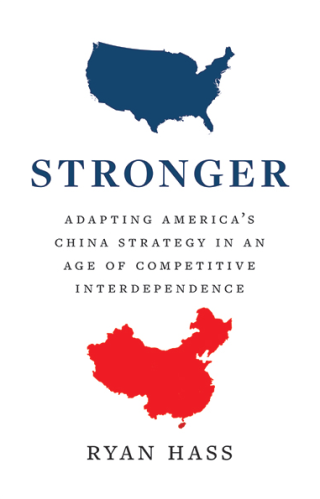
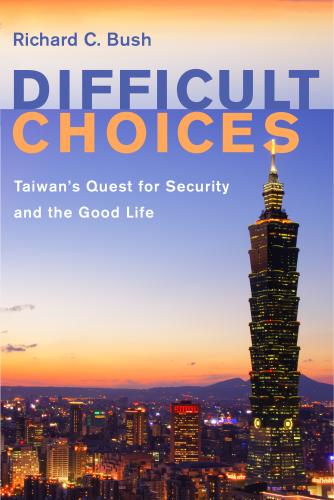


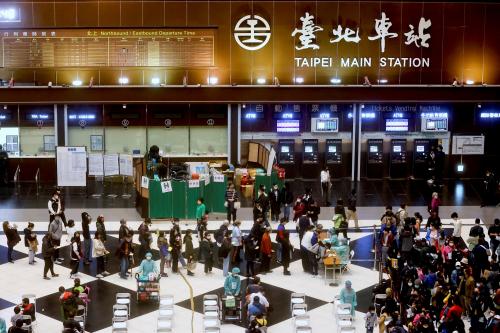


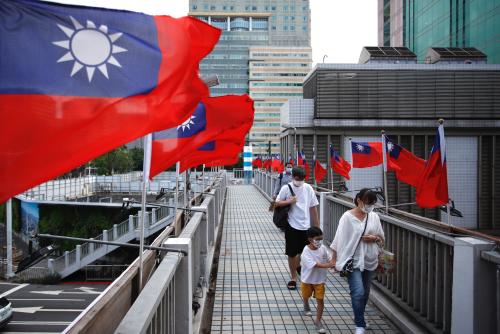
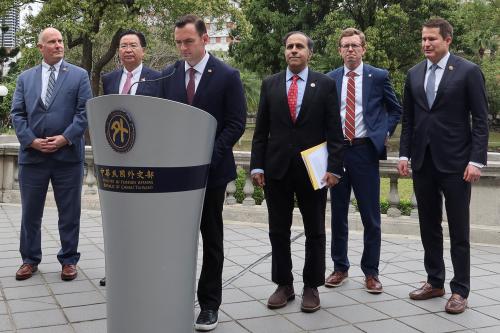
Commentary
Beyond Pelosi’s Taiwan visit: Uncertainties about cross-Strait stability
August 22, 2022